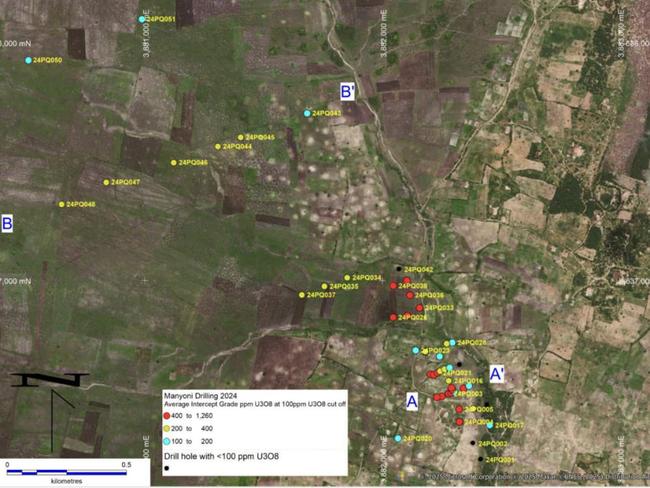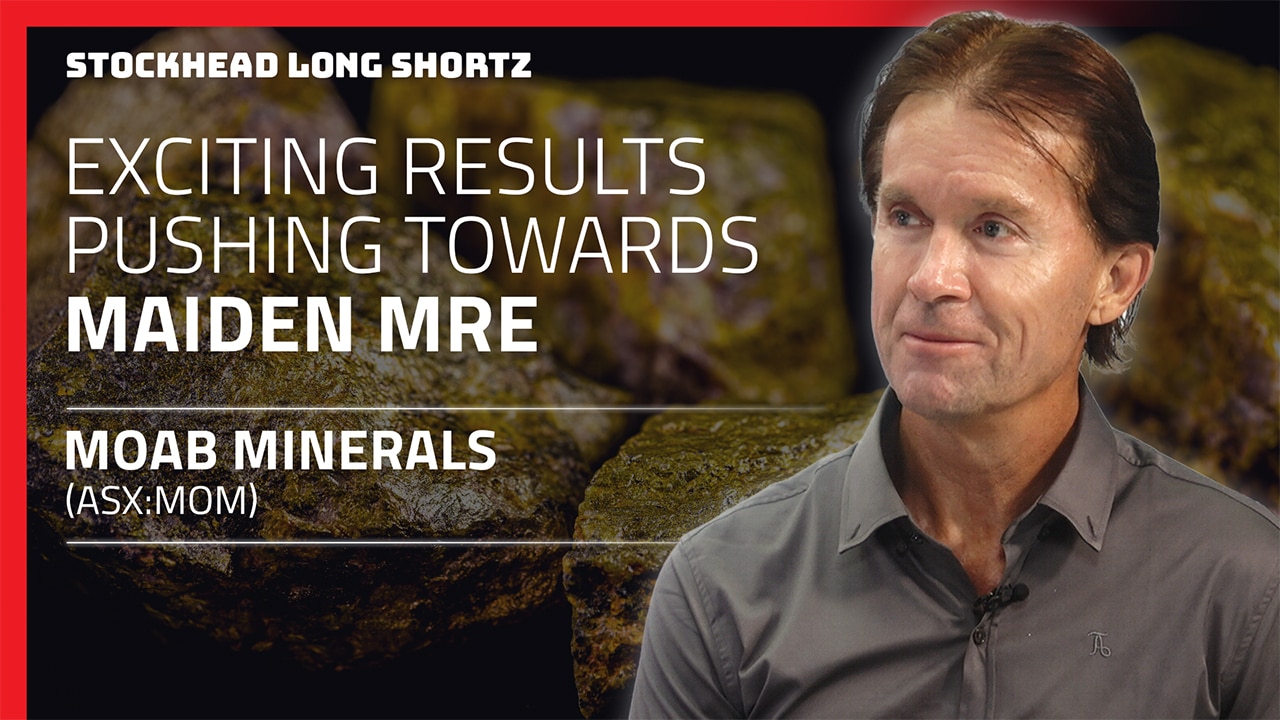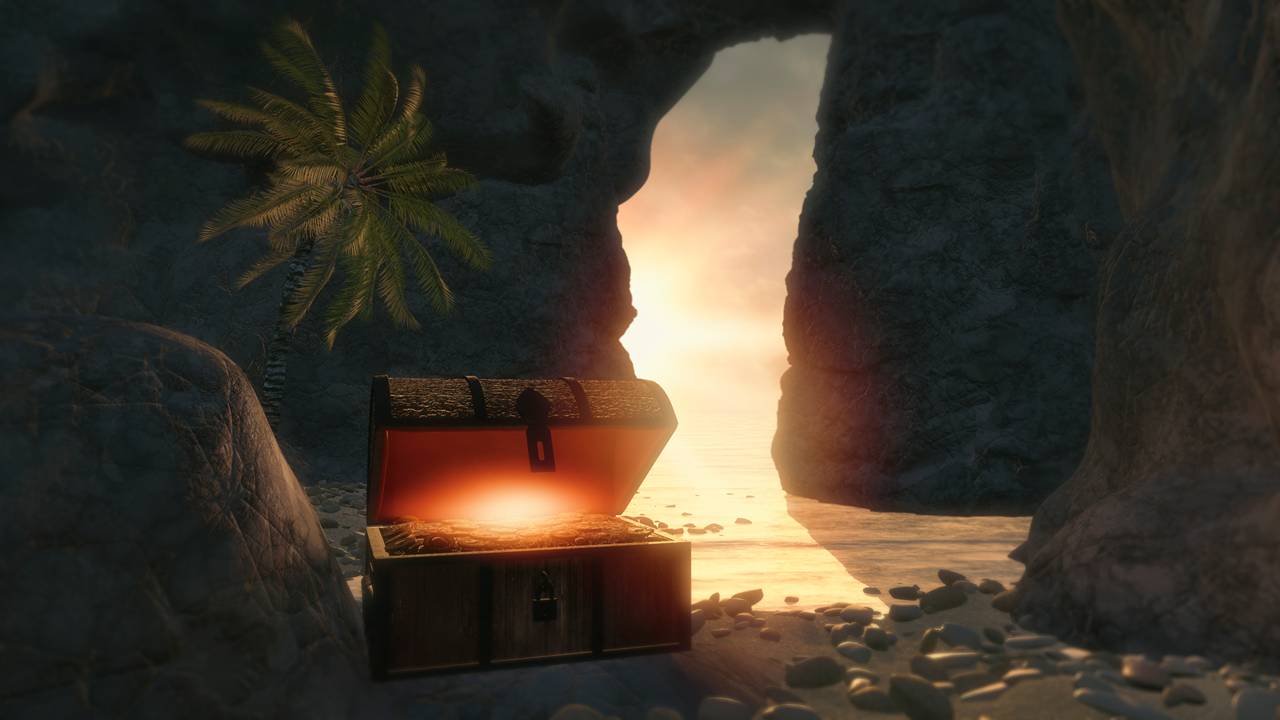Moab energised as drilling verifies Manyoni’s uranium potential
Moab’s drilling to date has confirmed that its Manyoni project in Tanzania is a consistently mineralised, flat-lying uranium system.

Stockhead
Don't miss out on the headlines from Stockhead. Followed categories will be added to My News.
Special Report: Moab Minerals’ Manyoni project in Tanzania is looking the goods after confirming uranium mineralisation is present in all 51 of the drill holes for which it has received assays.
- Moab Minerals’ first 51 holes at Manyoni have all intersected uranium with 49 of them returning assays of >1m at 100ppm U3O8
- Results confirmed that Manyoni is a consistently mineralised, flat-lying system with just 1m of overburden
- Assays for remaining 59 holes expected over the coming weeks while testing is underway to determine optimum processing pathway
Of these, 49 holes returned assays of more than 1m grading 100 parts per million U3O8 while 18 holes exceeded 1m at 400ppm U3O8.
Notable assays include:
- 3m at 1126ppm U3O8 from surface (24PQ003);
- 2.4m at 1023ppm U3O8 from surface (24PQ004);
- 2.3m at 1042ppm U3O8 from 0.7m (24PQ036); and
- 4.5m at 740ppm U3O8 from surface (24PQ005).
Importantly for Moab Minerals (ASX:MOM), the drilling to date has confirmed that Manyoni is a consistently mineralised, flat-lying system with just 1m of overburden, making it suitable for low-cost, open-cut mining.
The company had launched the 110 hole program totalling 1608m to validate historical drill results, identify the type of mineralisation based on metallurgical testwork, and form the basis for a maiden JORC resource.
“These results have exceeded our expectations and confirm the widespread and consistent distribution of uranium mineralisation across the tenements,” managing director Malcolm Day said.
“The mineralisation is remarkably consistent and at shallow depth, suitable for open-cut mining. The next step is to compare these results with historical assays as part of the verification exercise.
“This work is intended to facilitate a JORC 2012 compliant MRE in 2025.”

Manyoni project
The Manyoni tenements sit about 100km northwest of Tanzania’s capital city Dodoma in the central part of the Tanzanian Archaean Shield.
Uranium is deposited in a shallow playa lake system as schröckingerite (in the lake sediments) and carnotite in the granitic saprolite below the lake sediments.
The mineralisation varies from flat lying to gently undulating as it follows the direction of the palaeodrainage to the south-east while the average depth to the top of mineralisation is approximately 1m in the Manyoni C1 area.
While it was extensively explored through the early 2000s, activity petered out following a decline in nuclear activity brought about by the Fukushima nuclear accident in 2011.
The push towards zero emissions revived uranium’s prospects, leading to a big jump in prices in 2023 and early 2024.
Further activity
MOM is currently awaiting assays from the remaining 59 holes from the drill program with results expected in the coming weeks.
The company also expects to complete the acquisition of the neighbouring AuKing tenements shortly, which will add known uranium mineralisation located immediately adjacent to its existing tenure.
Additionally, metallurgical testwork is underway to determine the optimum processing pathway for Manyoni mineralisation and help focus future exploration into areas where metallurgical recovery is most favourable.
Further drilling is also in the works to define the limits of the known mineralisation by step-out drilling on broad centres up to 200m x 400m apart.
This article was developed in collaboration with Moab Minerals, a Stockhead advertiser at the time of publishing.
This article does not constitute financial product advice. You should consider obtaining independent advice before making any financial decisions.
Originally published as Moab energised as drilling verifies Manyoni’s uranium potential


